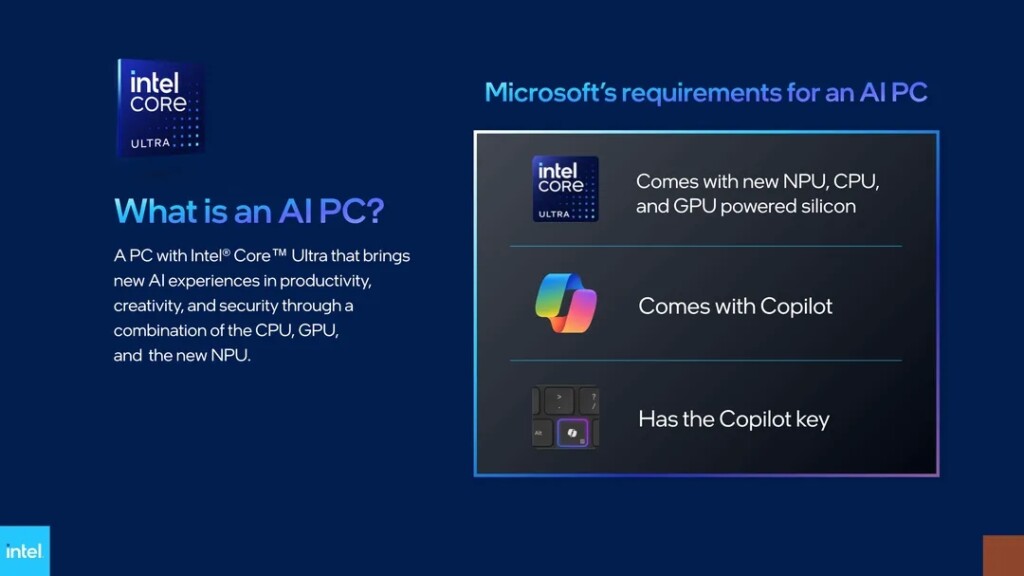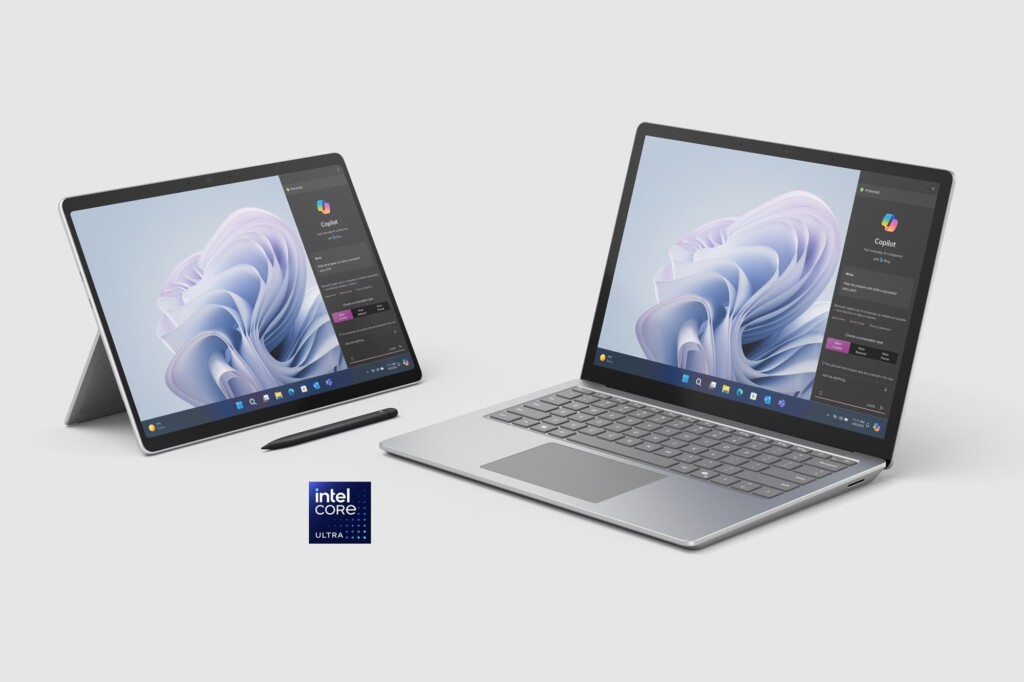If you’ve been following the tech scene, then you’re probably expecting to see AI everywhere in the PC space for the next few years. This is especially with Windows machines, being the majority operating system, and Microsoft has been pushing hard in this regard. One recent move in this direction was announcing that it will be adding a key dedicated to the Copilot feature onto Windows 11 keyboards. And now, it looks like the mandate has been passed to OEM partners.
The Verge reports that Intel has started sharing Microsoft’s requirements to OEMs to build AI PCs, which are defined by three elements. The first is that the system “comes with new NPU, CPU and GPU powered silicon”. Second is that said system comes with Copilot, which the aforementioned NPU facilitates. Finally, it also has to have the Copilot key on its keyboard. As you’d expect, the company’s latest Surface hardware, among the first of these AI PCs, has all three.

Also noted in the report is that this will lead to some conflicts in definition by the two companies. Some laptops that use the latest Core Ultra chips with NPUs don’t have the dedicated Copilot key, so while Intel considers them AI PCs, Microsoft does not. Though this may have something to do with these laptops being launched before Microsoft made its Copilot key part of the definition.
All that being said, it’s unclear what this would mean for hardware makers. Specifically, if there will be repercussions for not adhering to the Copilot key requirement, or if there will be benefits for including the key. Beyond the obvious marketing of the latest buzzword, of course.

And perhaps more importantly, what difference does this make for the average consumer. After all, recent Windows 11 updates have seen the “show desktop” shortcut at the corner of the taskbar being replaced by Copilot by default. Granted, this can be changed back to the old “show desktop” button, if the Windows + D keyboard shortcut doesn’t work for you. But with the new default, it seems excessive to also want a dedicated keyboard key for the feature, especially if it will be replacing the much more useful right click context menu button.
(Source: The Verge)
What’s your Reaction?
Follow us on Instagram, Facebook, Twitter or Telegram for more updates and breaking news.




















